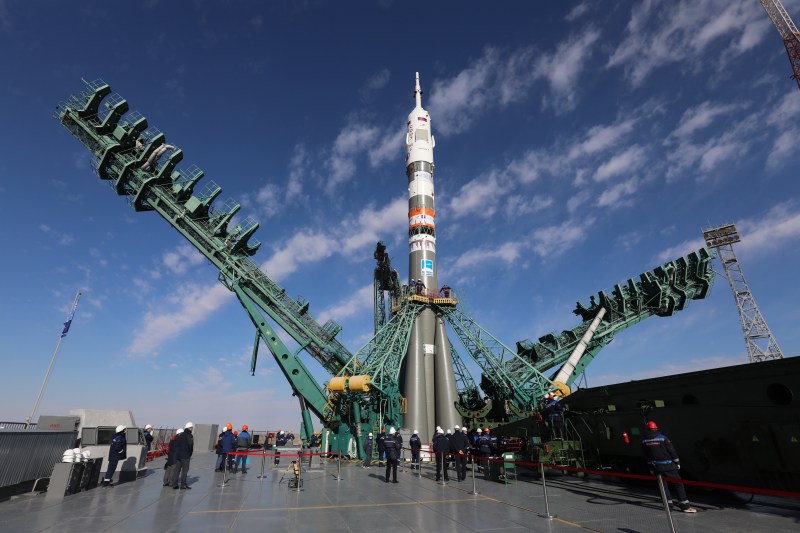Featured image credit: ROSCOSMOS
Launch Time | September 15, 2023 – 15:44:35 UTC | 18:44:35 MSK |
|---|---|
Mission Name | Soyuz MS-24, crewed flight to the International Space Station (ISS) |
Launch Provider | ROSCOSMOS |
Customer | ROSCOSMOS |
Rocket | Soyuz 2.1a |
Launch Location | Launch Complex 31/6, Baikonur Cosmodrome, Kazakhstan |
Payload mass | ~7,050 kg (15,540 Ib) (for the whole spacecraft) |
Where did the spacecraft go? | It rendezvoused with the ISS, ~400 km low Earth orbit (LEO) at a 51.66° inclination |
Did they attempt to recover the first stage? | No, this is not a capability of Soyuz |
Where did the first stage land? | The boosters crashed into the steppes of Kazakhstan |
Did they attempt to recover the fairings? | No, this is not a capability of Soyuz |
Were these fairings new? | Yes |
This was the: | – 85th launch of Soyuz 2.1a of 2023 – 6th launch from the Baikonur Cosmodrome of 2023 – 149th orbital launch attempt of 2023 |
Where to re-watch | Launch Docking Hatches opening |
What Does All This Mean?
ROSCOSMOS launched the crewed Soyuz MS-24 mission (Expedition 70/71) to the International Space Station (ISS) on September 15, 2023. This launch saw three new crew members join the station, cosmonauts Oleg Kononenko (ROSCOSMOS, Commander), Nikolai Chub (ROSCOSMOS, Flight Engineer), and astronaut Loral O’Hara (NASA, Flight Engineer). ROSCOSMOS launched this mission using a Soyuz MS spacecraft atop a Soyuz 2.1a launch vehicle, from Launch Complex 31/6, at the Baikonur Cosmodrome in Kazakhstan.
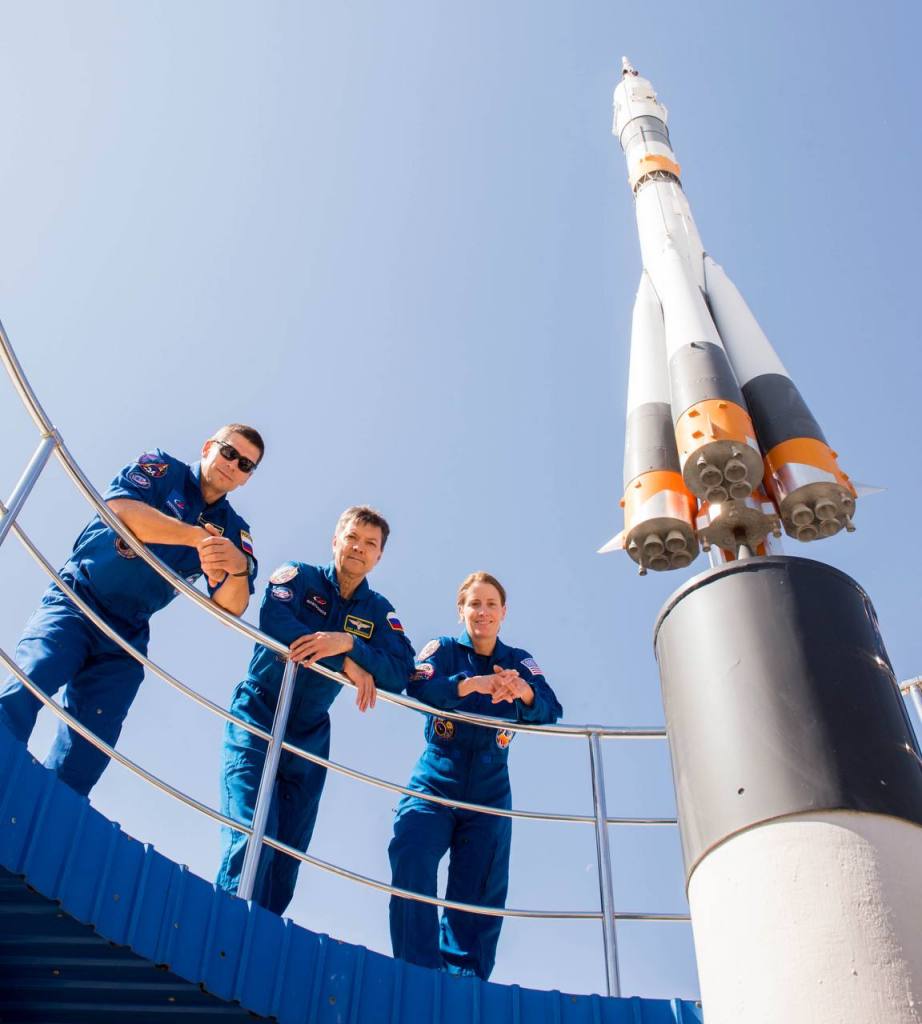
Initially, the Soyuz MS-23 mission was intended to bring Oleg Kononenko, Nikolai Chub, and Loral O’Hara to the ISS on March 16, 2023. However, the plans were drastically changed due to the issue in the docked Soyuz MS-22 spacecraft that could not perform the return of the crew and reentered the Earth unmanned. Therefore, the Soyuz MS-23 mission went to the ISS uncrewed and the original crewed flight was reassigned to the Soyuz MS-24 mission.
How Did It Go?
The Soyuz MS-24 mission lifted off at 15:44 UTC (18:44 MSK) on September 15, 2023. The Soyuz MS-24 docked to the Rassvet module of the ISS at 18:53 UTC (21:53 MSK) of the same day. The hatches between the arrived spacecraft and the ISS were opened at 21:16 UTC on September 15 (00:16 MSK, September 16).
Soyuz MS-24 Mission
The MS-24 crew was comprised of two Russian cosmonauts and one American astronaut. The crew is Oleg Kononenko (Commander), Nikolai Chub (Flight Engineer 1), and Loral O’Hara (Flight Engineer 2). The MS-24 backup crew was made up of Aleksey Ovchinin (Commander) and Tracy Caldwell-Dyson (Flight Engineer 2).
Commander: Oleg Kononenko
MS-24 commander, Oleg Kononenko, started his career as an engineer at the Central Specialized Design Bureau TsSKB-Progress in Kuybishev. At the age of 34, he began training as part of the group of cosmonauts selected for the ISS program. Then, he served as a flight engineer for Expedition 17, Expedition 30, and Expedition 44 /45, a commander for Expedition 31 and Expedition 58/59. During his first spaceflight in 2008, Kononenko performed two spacewalks (Expedition 17).
MS-24 marks Kononenko’s fifth spaceflight. After this Expedition, Kononenko will have spent a total of 916 days in space, exceeding the current record of 878 days by Gennady Padalka.


Flight Engineer 1: Nikolai Chub
Roscosmos cosmonaut Nikolai Chub was born in 1984. He studied at Novocherkassk Polytechnic Institute, graduating in 2006 with a degree in management and informatics. Chub was then selected as a Roscosmos cosmonaut in 2012. He completed his training in 2014, thus being named a test cosmonaut.
The MS-24 mission is Chub’s first journey to space!
Flight Engineer 2: Loral O’Hara
Loral O’Hara was born in Houston, Texas in 1983. She earned a Bachelor of Science degree in aerospace engineering from the University of Kansas in 2005 and a Master of Science in aeronautics and astronautics from Purdue University in 2009.
O’Hara was selected by NASA to join the 2017 Astronaut Candidate Class and graduated from it in 2020. Like her crew-mate Chub, MS-22 is O’Hara’s first spaceflight!
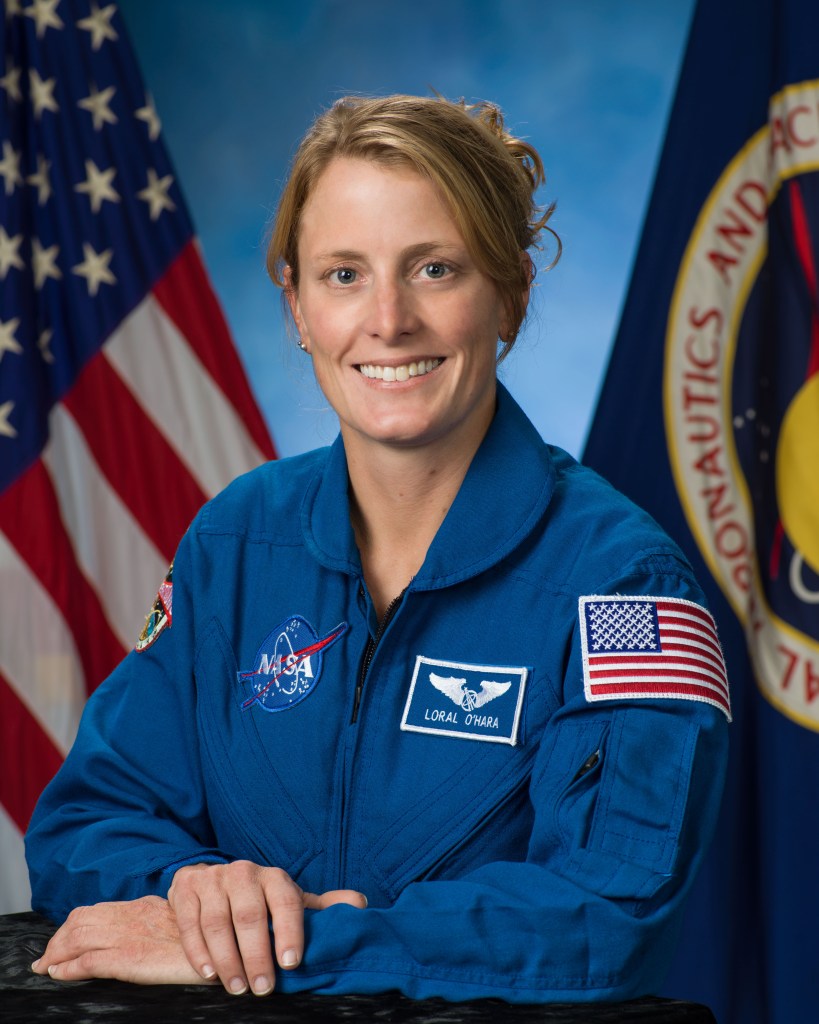
Zero-G Indicator
For the Soyuz MS-24 mission, a Zero-G indicator was represented by a plush seagull, a symbol of Chekhov Moscow Art Theatre in Russia.
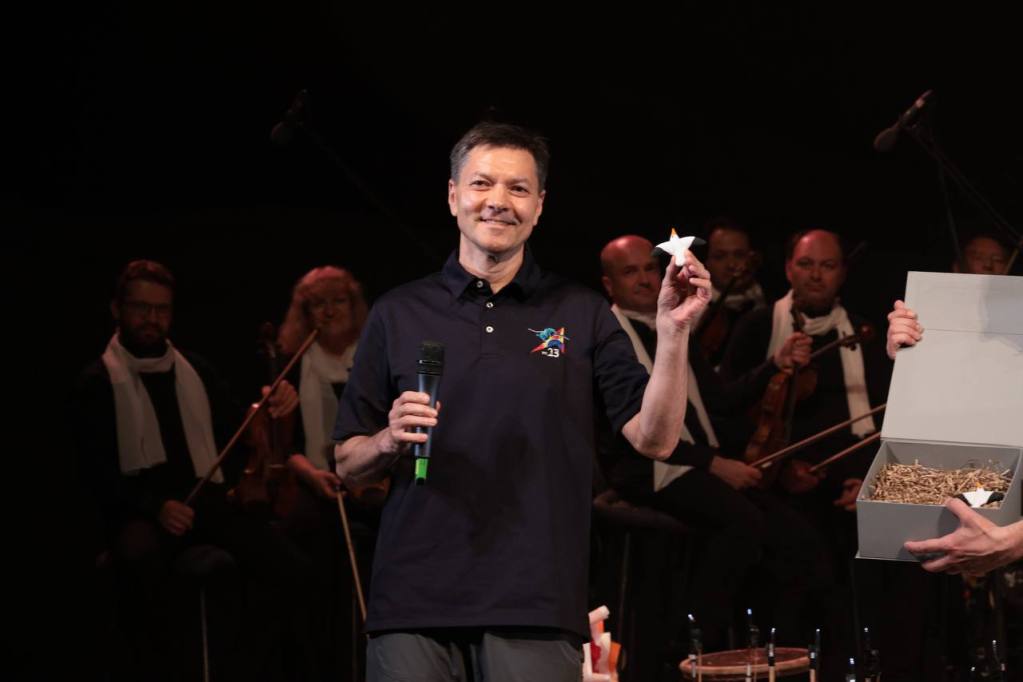
Soyuz MS-24 Mission’s Profile
Approximate Timeline (Based On The Soyuz MS-18 Mission)
| Hrs:Min:Sec From Lift-Off | Events |
| – 00:00:15 | Engine start sequence |
| 00:00:00 | Lift-Off |
| + 00:01:53 | Escape tower jettison |
| + 00:01:58 | First stage separation |
| + 00:02:33 | Fairing jettison |
| + 00:04:47 | Second stage separation |
| + 00:04:55 | Tail section separation |
| + 00:08:46 | Third stage main engine cutoff |
| + 00:08:49 | Soyuz MS separation |
What Is Soyuz 2.1a?
ROSCOSMOS’s Soyuz is a multi-use medium-lift launch vehicle that was introduced in far 1966 and since then has been the workhorse of the Soviet/Russian space program. It is capable to launch civilian and military satellites, as well as cargo and crewed missions to the ISS. Over the decades, several variants of the Soyuz rocket have been developed. Soyuz 2.1a is one of its latest iterations that belongs to the Soyuz-2 rocket family.

The rocket consists of three stages, all of them are expendable. When launching to the ISS, Soyuz-2 can be flown with either a Progress capsule or a Soyuz spacecraft. On the Soyuz MS-24 mission, the Soyuz MS spacecraft was used.
Soyuz 2.1a is about 46.3 meters (152 ft) in height and 2.95 meters (9 feet) in diameter. The vehicle’s total lift-off mass is approximately 312,000 kg (688,000 lb). The rocket’s payload lift capacity to low-Earth orbit (LEO) is between 6,600 and 7,400 kg depending on the launch site.
Stages
| First Stage | Second Stage | Third Stage | |
| Engine | 4 RD-107A | RD-108A | RD-0110 |
| Total Thrust | 840 kN (188,720 lbf), sea level 1,020 kN (229,290 lbf), vacuum | 792 kN (178,140 lbf), sea level 922 kN (207,240 lbf), vacuum | 298 kN (67,000 lbf), vacuum |
| Specific Impulse (ISP) | 263 s, sea level 320 s, vacuum | 258 s, sea level 321 s, vacuum | 326 s, vacuum |
Side Boosters
The first stage of the Soyuz 2.1a rocket is composed of four side boosters that are powered by RD-107A engines. Each one of the boosters has a conical shape and a dry weight of 3,784 kg. It is approximately 19.6 meters in length, with a diameter of 2.7 meters. Each side booster has two vernier thrusters that are used for flight control.
The RD-107A engine runs on rocket-grade kerosene (RP-1) and liquid oxygen (LOx). The propellants are stored in the pressurized aluminum alloy tanks, the kerosene tank is located in the cylindrical part of the booster, and the LOx one is in the conical section. Each one of those engines has four combustion chambers and together they are capable of producing a thrust of 840 kN at sea level and 1,020 kN in a vacuum.
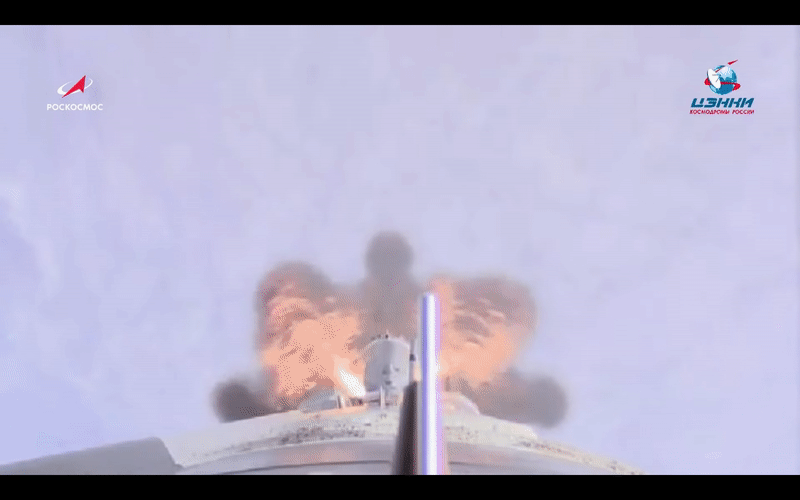
Perhaps, the most spectacular moment of the Soyuz-2 rocket’s launch is the separation of the first stage. It happens approximately two minutes after the launch. The boosters perform a pattern, known as the “Korolev cross” (named after Sergei Korolev, a very important figure of the USSR space program and history).
Second And Third Stages
The center core stage is powered by a single RD-108A engine, and the upper stage is fitted with a single RD-0110 engine. Both of these engines run on rocket-grade kerosene and LOx and have four combustion chambers. The second stage is 27.10 meters long, with a diameter of 2.95 meters, and a dry mass of 6,545 kg. It has four vernier thrusters for three-axis flight control.
The third stage of a Soyuz-2 rocket has a height of 6.7 meters, a diameter of 2.7 meters, and a dry mass of 2,355 kg. One interesting thing about the engine on this stage is that it starts its ignition sequence prior to stage separation. This process is called “hot fire staging”.
Soyuz MS Spacecraft
The Soyuz MS spacecraft is the latest version of Russia’s long-standing three-person spacecraft. Soyuz capsules first flew in the 1960s. The spacecraft’s external appearance is largely unchanged over this time. However, the internal systems and capabilities have been upgraded many times.

The Soyuz MS variant is one of the versions from the fourth generation of this spacecraft. Its first flight was in 2006. Soyuz consists of three sections:
- the orbital module
- the descent module
- the service module
The Orbital Module
This is the forward section of the spacecraft, the part that docks to the ISS. It is the part of the spacecraft where the crew will spend most of their time on orbit. It has more living room than the descent module. On the Progress uncrewed resupply missions, this is replaced by a cargo module.
The Descent Module
This is the middle section of the spacecraft. It is the only part that returns intact to land on Earth. This is where the crew will sit during the launch and the reentry. They will be wearing spacesuits in case of capsule depressurization. There is very little room for the crew of three in this module. On the Progress uncrewed resupply missions, this is replaced by a refueling module that can transfer fuel into the Russian segment. This can then be used by thrusters on the ISS to boost its orbit.
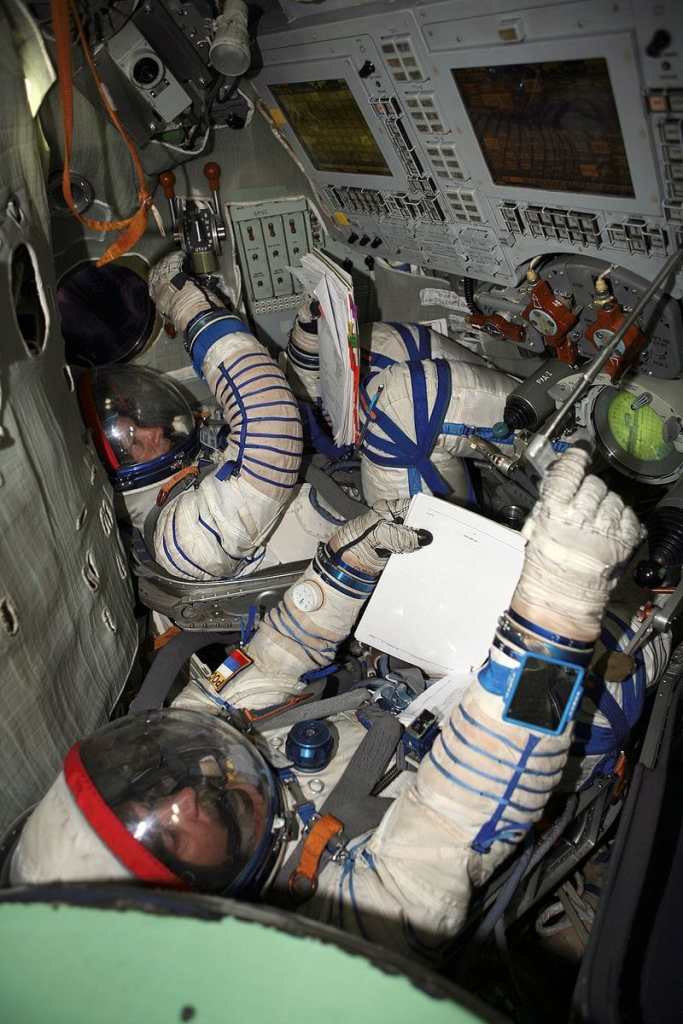
The Service Module
This is the aft (rear) section of the spacecraft. It provides the main engine used for manoeuvring on orbit and the thrusters for fine control during docking and departure. Also, it also contains the life support system for environmental control of the rest of the spacecraft. In addition, it also supports the solar panels and various radio communication systems.
Kurs-NA Automatic Docking System
Like the Soyuz spacecraft, Progress MS is equipped with a Kurs-NA automatic docking system that was first tested on the Progress M-15M mission in July 2012. Compared to its ancestor, Kurs-A, the new system has only one AO-753A rendezvous antenna. Kurs-A had five (two 2AO-VKA and three AKR-VKA) of them. This antenna broadcasts radar pulses that are needed to determine the altitude and relative position of the spacecraft to the ISS. Moreover, Kurs-NA uses less power than Kurs-A.
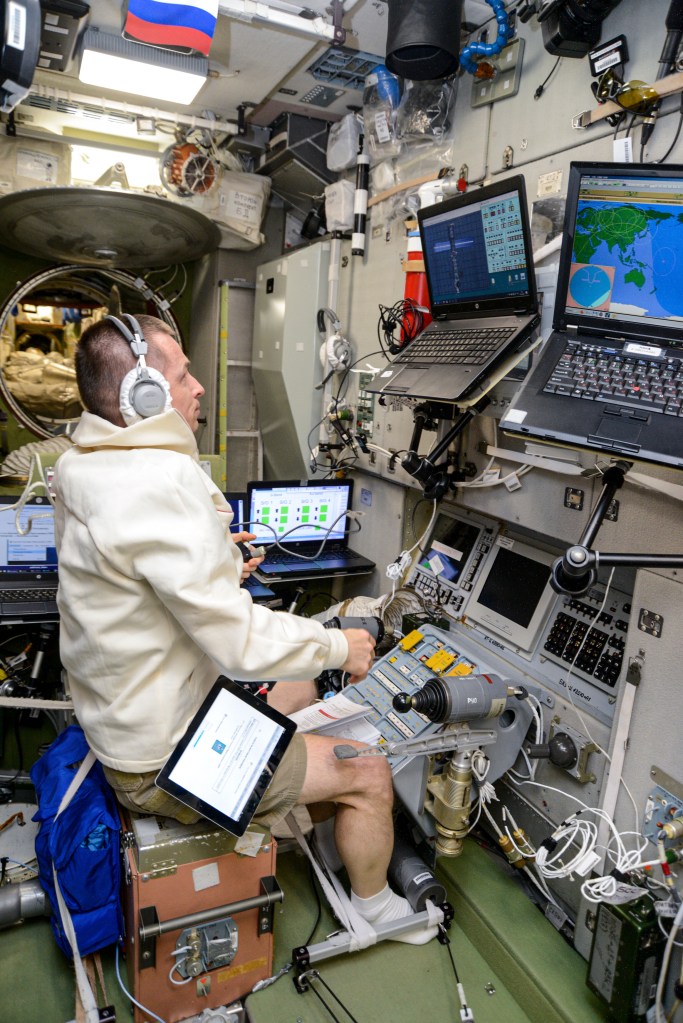
In addition, the Soyuz spacecraft can be docked to the ISS manually by the docking system called the Tele-Robotically Operated Rendezvous unit (TORU). This manual system serves as a backup to Kurs-NA in emergency situations and is located inside the Zvezda service module.




